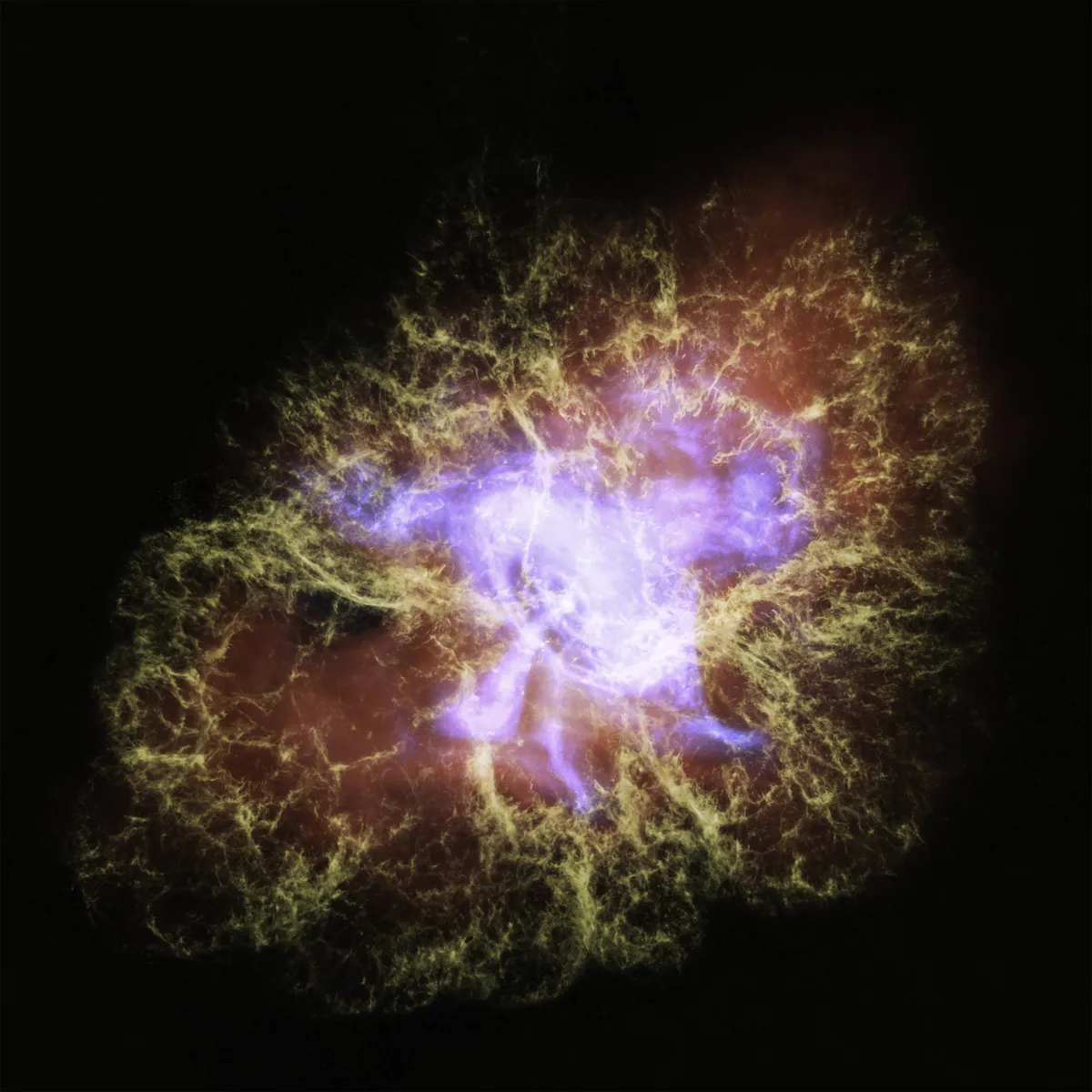One of the few objects to emit radiation all across the electromagnetic spectrum, the Crab Nebula is the wreckage of a supernova first observed almost 1,000 years ago.
It appears in historic astronomical records of the time, a lot like the famous supernova SN 1181.
With a rapidly spinning neutron star embedded in its centre, it booms beams of radiation at 30 pulses per second, while around its pulsing heart whirl filaments of gas and debris flung out by the original explosion.
NASA visualisation specialists have now combined multi-wavelength data from Chandra, Hubble and Spitzer to create a 3D representation of this energetic nebula. View it at bit.ly/youtubecrabnebula.
Image stats
Observatories Chandra X-ray Observatory, Hubble Space Telescope, Spitzer Space Telescope
Release date 5 January 2020
Image credit NASA/ESA/STScI/F.Summers, et al.; NASA/CXC/SAO/N.Wolk, et al., & NASA/Caltech/IPAC/R.Hurt

